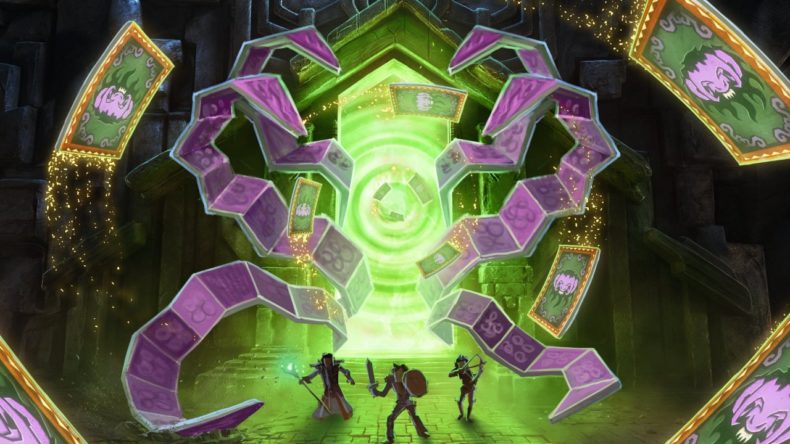February 1, 2024.
As card-battling games go, Hellcard feels fairly fresh. It’s set in a paper-craft fantasy world, itself part of the “Paperverse”, a network of games the developer appears to be trying to set up as a new universe called the Archive of Awesome. They just might succeed too, if every game is as fun as Hellcard.
It has a pretty straightforward setup: survive for 12 levels of a randomised dungeon while unlocking new companions, cards, and artefacts to help deal with the increasingly tough enemies. But Hellcard is anything but easy. The difficulty ramps up fast, and the randomised nature of each new run means you’re relying on a certain amount of luck before you even get started.
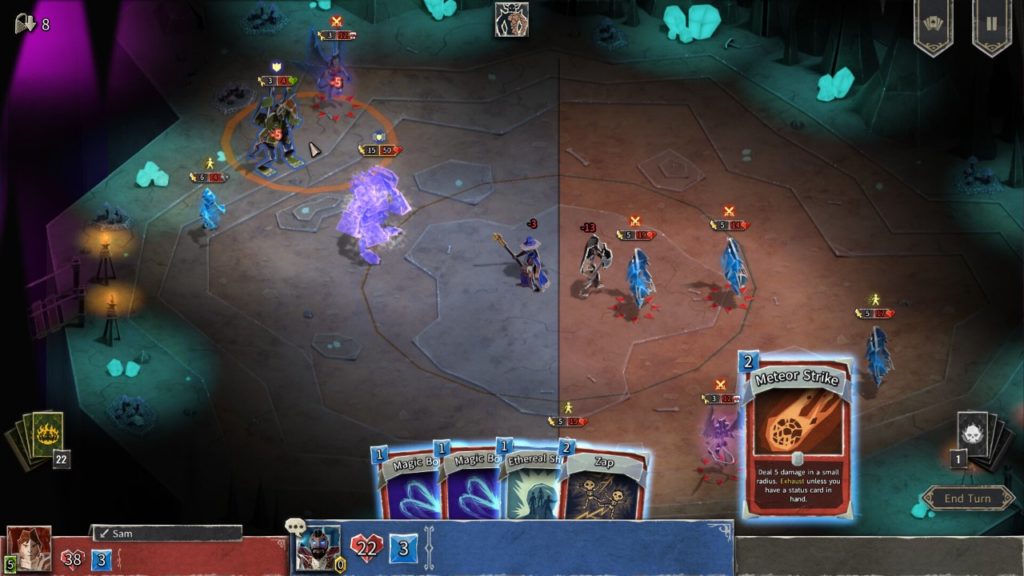
You begin by choosing one of three heroes, a fighter, archer, or mage. You can upgrade these starting classes, called “outfits” by playing with them, but that in itself takes a while. There are lots of other classes to unlock as companions though, and you’ll get to randomly pick one to join you for at least the first three floors and then randomly throughout. You can have a total of three, and it’s best to have a balance of attack and defence types.
Each floor is filled with enemies, which your heroes will face back-to-back. It’s then turn-based, with you using mana to cast cards that either deal damage, buff you, debuff the enemy, or apply a block value to your heroes. Each phase should be a mix of damage dealing and blocking to mitigate damage in the enemy round, but you won’t always have the Mana to do both.
Therefore, you need to play tactically. You can’t move, but the enemy can reposition, either moving within range of melee or ranged damage. There are rare healing cards, but most of what you’ll unlock are damage cards. Different classes play completely different cards, too, so in order to double up on certain buffs you’ll need to double up on classes, often leaving you short of a valuable archetype.
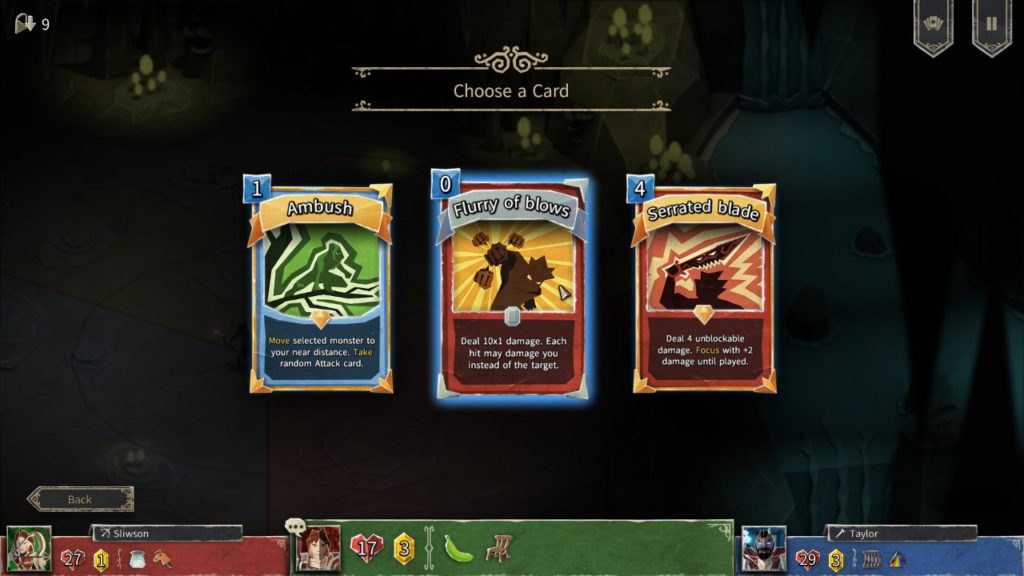
If a hero dies, you’ll need to find a special room to resurrect them. Each floor you descend has a choice of two rooms, with the exception of boss floors. Each floor will have a random assignation, including an armoury to upgrade cards, a camp to heal, or a treasure room to get new cards. At the end of each floor you’ll be given a gem to use as currency to buy run-specific buffs, a new card, and then either a new companion, artefact, or party member.
Artefacts are permanent unlocks that you can assign pre-run to confer buffs, which is where the meta-progression comes into Hellcard. But the game is still skewed against you in terms of difficulty. Most of my runs end by the fifth or sixth floor, even having upgraded and unlocked artefacts. You’re always outnumbered three or four to one, and some of the enemies have large health pools.
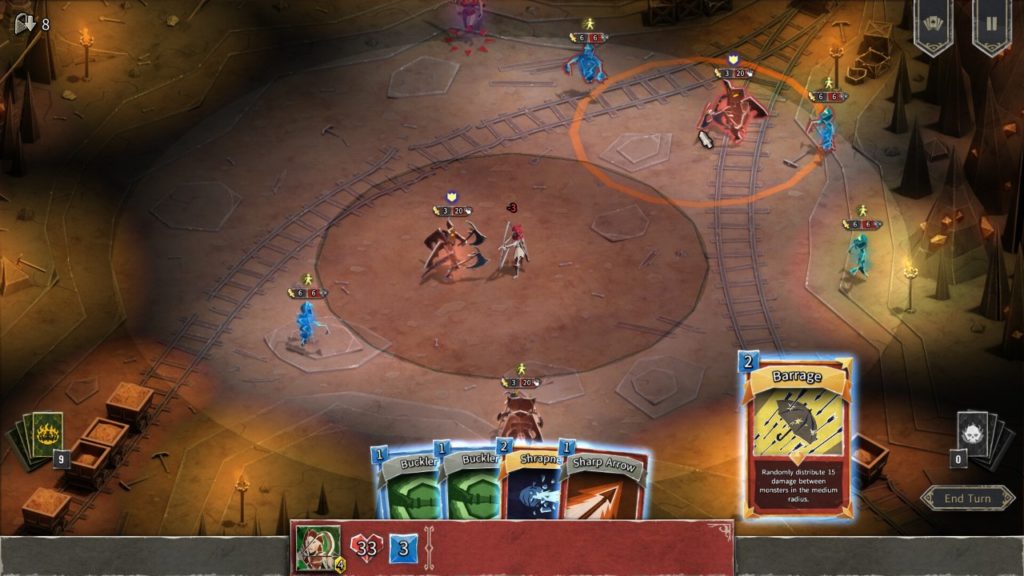
But the action is fast-paced and largely likeable anyway, even when you’re losing. As is often the case with meta-progression, any progress feels rewarding, so even when you’re losing you’re becoming increasingly tougher as you unlock new items and develop a better understanding of the various systems.
A wide variety of enemies, companions, and spells make Hellcard feel varied and interesting, even when it’s becoming frustrating. And there’s a hell of a lot to get your head around. The Tinkerer class in particular took me ages to understand, given how his cards and buffs work. He’s not just a case of attack or defend, but rather requires some real thought to use his various contraptions.
You also need to consider that many enemies have a “thorns” affect which will deal damage back toi you unless you kill them in a single hit, which also applies to AoE attacks and can do tremendous damage if you’re not careful.
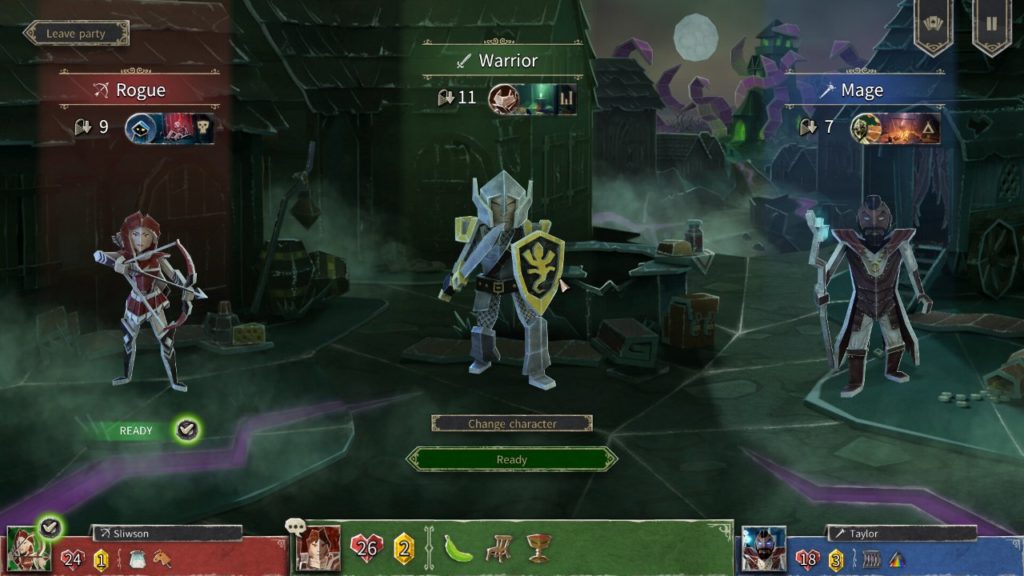
Graphically, I’m not sure I’m fully on board with Hellcard’s look. The papercraft world is interesting, sure, but it can be hard to differentiate monsters when they’re standing in a cluster, while the hero designs are mostly just fine, colourful but not overly elaborate. Dungeon floors also become samey, even if you’re mixing up your selections.
Hellcard is certainly fun in short doses, but fun can give way to frustration from time to time when it repeatedly feels like the odds are against you. But there’s enough variety to enable real tactical play, especially given that there’s a cooperative multiplayer element (which I’m yet to try). An endless mode also unlocks when you beat the standard 12 floors for the first time, so good luck with that. Ultimately Hellcard is a decent if unremarkable card-battler with some cool ideas and a hit-and-miss art style, and offers a decent challenge for fans of the genre.
Some cool ideas
Lots of cards and companions
A good challenge
Can be frustrating
Art style is a bit cluttered
Gameplay loop gets repetitive
Hellcard is a decent if unremarkable card-battler with some cool ideas that offers a decent challenge for fans of the genre.


